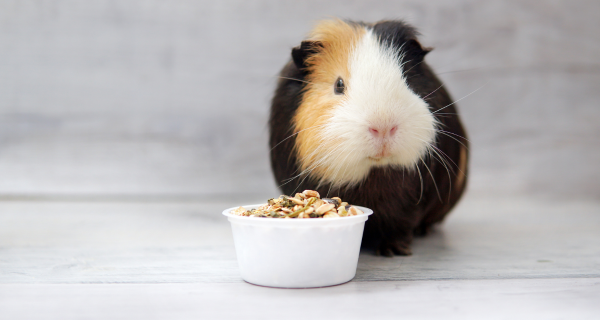

Information provided by Dr Narelle Walter BVSc from Melbourne Rabbit Clinic for The Pet Directory
What do you feed your Guinea Pig?
Hay: The Basic Food
Hay is the mainstay of every Guinea Pig’s diet. You need to provide as much fresh hay as they will eat. It maintains the digestive system and helps in grinding down their teeth and preventing dental problems. Hay should be available all the time.

Guinea Pig Pellets
Guinea pig pellets can be an easy way to provide your guinea pig with the proper balance of vitamins (except for Vitamin C), minerals and other nutrients. It is not necessary to feed your GP pellets but if you don’t you have to make sure they are getting enough Vitamin C and provide a varied diet. You also need to make sure you do not feed too many pellets as they are very high in calories and most guinea pigs we see are very over weight. Pellets should be fed as individual meals and not made available all the time.
When choosing your pellets, be sure to avoid the guinea pig “mixes” that contain nuts, seeds, molasses and dried fruits. These mixes are high in fats and oils, which can lead to excessive weight gain, digestive upsets and dental problems.
Vitamin C Requirements
Guinea pigs cannot produce or store vitamin C, so they need to obtain it from their diet on a daily basis. Do not rely on pellets to provide all the Vitamin C your Guinea Pig needs. The Vitamin C in pellets will slowly degrade from manufacture (not from opening the bag), and unless there is a manufacture date you still need to provide Vitamin C in a balanced diet. Fresh fruit and vegetables are the only way to ensure your Guinea Pig is getting enough Vitamin C.
Calcium
Calcium is also important for our guinea pigs, but in this case too much is a problem. Guinea pigs are very good at excreting calcium in their urine, too much in their diet results in too much in their urine. This can cause crystals and stones to form. But don’t exclude it completely because too little can cause bone problems (or in some veggies to much phosphorous cancels out the calcium, a high calcium to phosphorus ratio is needed)
Fresh Fruits and Vegetables
It can be confusing what we should and shouldn’t feed our guinea pigs, not only do we have to think about Vitamin C content but also Calcium content and then after all that we have to find something our Guinea pigs actually like to eat… this can change from pig to pig. The idea is a various diet ( a little bit of everything and not too much of one thing) but make sure there is 2-3 high vitamin C fruit and veggies everyday and keep the high Calcium veggies to a minimum.
It is very important to remember that any diet change has to be done gradually, even the introduction of a new fruit and vegetable. If you are introducing a new food, gradually increase the amount over 2-3 weeks, and only introduce one food at a time. If there is any diarrhea, stop the new addition. Once diarrhea has resolved you may try again but in smaller amounts. This is even important when changing brands of pellets, slowly introduce the new by mixing with the old.
FRUITS
Vitamin C per 100 gm --
Fruits
98.0 mg -- Kiwi
61.8 mg -- Papaya
56.7 mg -- Strawberries
53.2 mg -- Orange
53.0 mg -- Lemon (no peel)
42.2 mg -- Cantaloupe
38.1 mg -- Grapefruit, Pink and Red
33.3 mg -- Grapefruit, White
30.8 mg -- Tangerine
29.1 mg -- Lime
27.7 mg -- Mango
24.8 mg -- Honeydew Melon
21.0 mg -- Blackberries
16.0 mg -- Casaba Melon
15.4 mg -- Pineapple
13.5 mg -- Cranberries
13.0 mg -- Blueberries
10.8 mg -- Grapes
10.0 mg -- Apricots
9.6 mg -- Raspberries
9.6 mg -- Watermelon
9.5 mg -- Plum
9.1 mg -- Banana
7.5 mg -- Persimmon, Japanese
7.0 mg -- Cherries, Sweet
6.6 mg -- Peach
5.7 mg -- Apple (with Skin)
5.4 mg -- Nectarine
4.0 mg -- Pear
3.3 mg -- Raisins, Seedless Fruits
Some Foods to Avoid:
-long celery stalks, strings can upset digestion, cut them up small
-iceberg lettuce (high in nitrates and water, no nutritional value)
-any shelled nuts or seeds (guinea pigs can choke on the shell fragments)
-raw beans (poisonous)
-rhubarb (extremely poisonous)
Nearly as important as an appropriate diet is entertainment. To relieve boredom for your guinea pig you need to provide entertainment. You can add rocks, bricks and tubes to their cage to provide surfaces to wear down their claws and to stimulate their sense of adventure. Tunnels and tubes can be obtained from a hardware store, 4 inch or larger PVC pipe provides shelter. Elbow joints and T joints are great, they are chew proof and easy to clean.
Bird toys with mirrors and bells also provide entertainment. Old towels and unpaired socks (hay filled or without) are great places to hide and seek if you are a guinea pig.
The FRUIT & Vegetable Check List



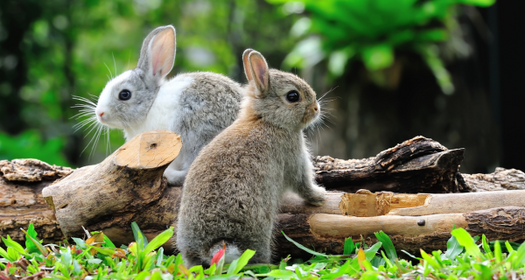
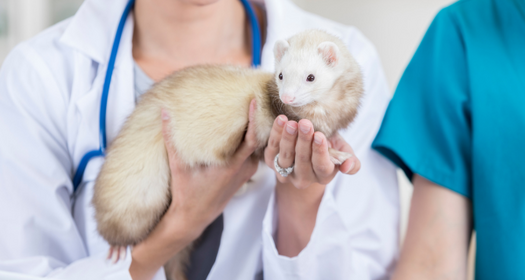
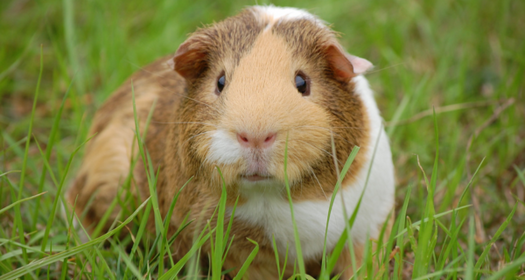
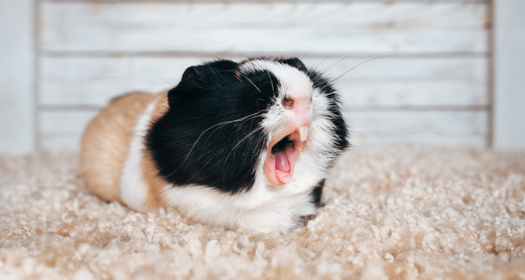
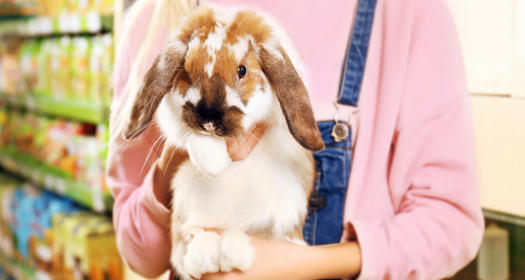




Leave Comment Below